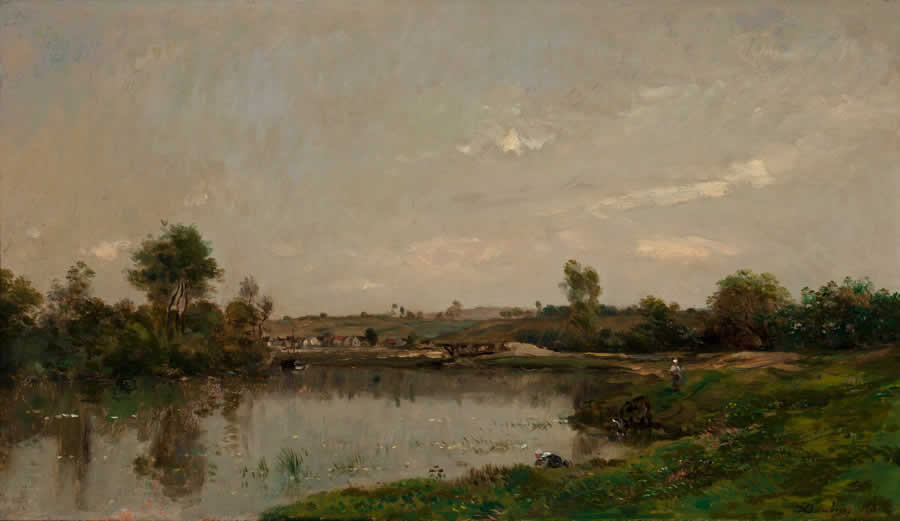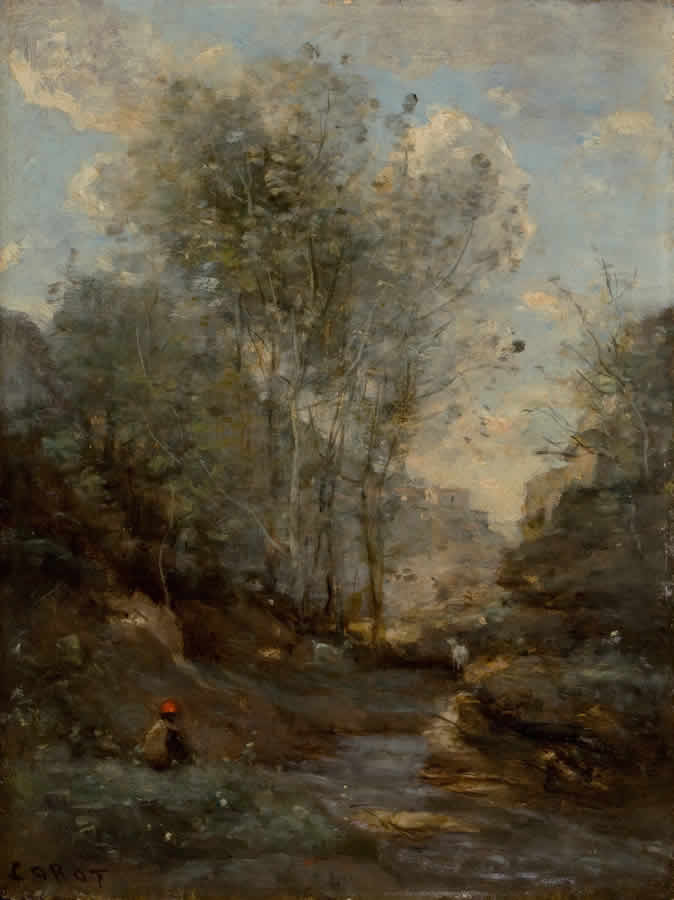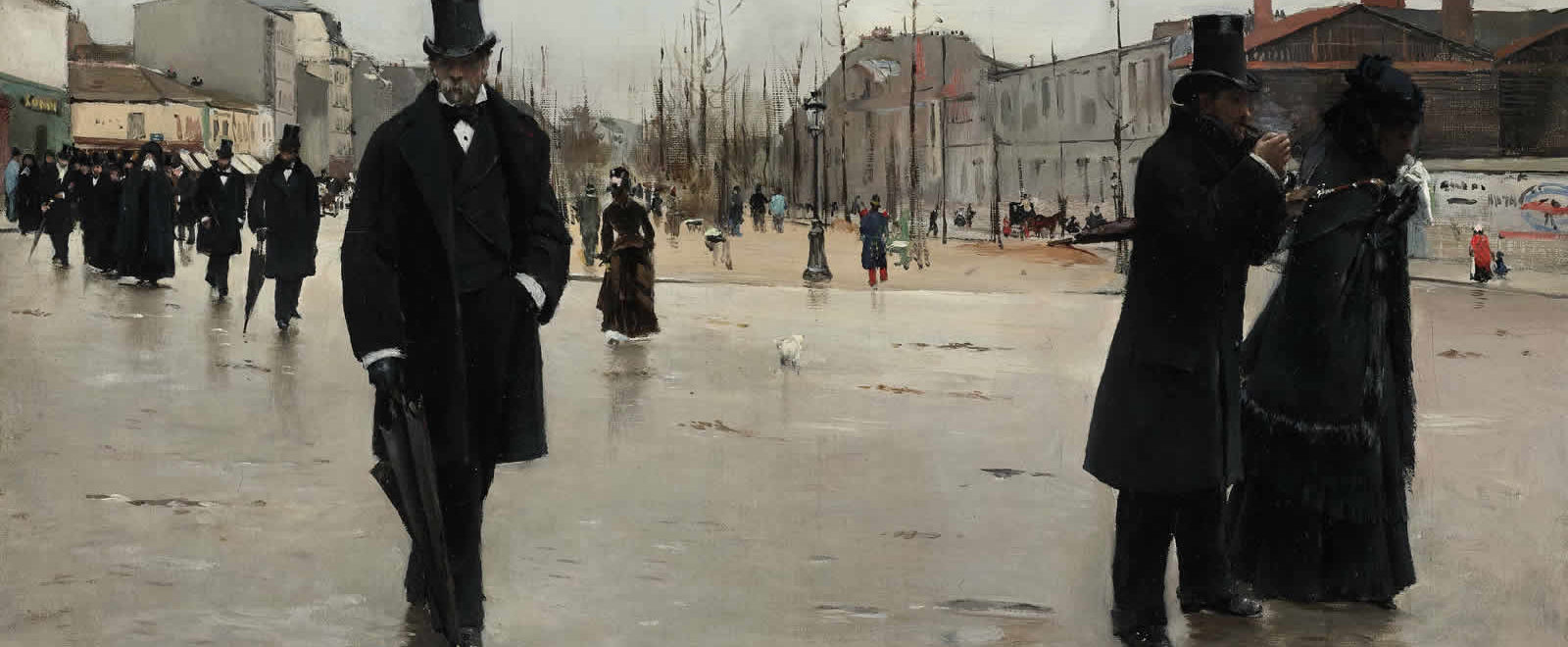19th CENTURY EUROPEAN PAINTINGS AMONG MOST IMPORTANT, AND PERHAPS UNDERVALUED, PERIODS IN ART HISTORY
By Eric Weider and Polly Sartori
“It was as if a veil had been torn from my eyes … I had grasped what painting could be … If I have become a painter, I owe it to Eugène Boudin.” – Claude Monet
When an art collector thinks of paintings, four major areas typically come to mind: Old Masters, Impressionism, Modern and Contemporary Art.
The last decade in particular has seen a fixation with Contemporary Art. And when we see auction results for names most of us know – Monet, Van Gogh, Cézanne, Gauguin, Picasso – it is easy to conclude that for all but the wealthiest, fine art is out of reach.
FINE ART
But the collector who thinks only of these four major schools of painting overlooks the crucial link that connects them, and therefore misses an important collecting opportunity. In between the Old Masters and the Impressionists were the pre-Impressionist 19th century artists. These pre-Impressionist 19th century artists represent perhaps the most overlooked and undervalued period in art history … one of the only areas in which important, museum-quality paintings can still be bought for relatively modest sums – in certain cases, under $100,000. But this condition will not last forever.
PATH TO IMPRESSIONISM
“What the Impressionists discovered in color will be developed even further, but many forget the ties which bind them with the past and I want to show that I have little faith in a rigid division between Impressionists and the others.” – Letter from Vincent Van Gogh to his brother, Theo, in 1890
The 19th century artists represent the bridge from the Old Master and Neo-Classical artists to the Impressionists and Modern Masters. They are to the Impressionists what Chuck Berry was to the Rolling Stones. As Vincent Van Gogh told his brother, the Impressionists did not pop out of nowhere; they were taught and inspired by their predecessors. It was their predecessors who pushed against the official rules and rigid systems to ease the boundaries about what an artist could explore and how he could paint.
Enlarge

Pissarro sought out Corot as his teacher. Monet was also inspired by Corot and was informally taught on the beaches of Normandy by Boudin and Jongkind. Renoir learned about color from Díaz de la Peña. Van Gogh was heavily inspired by Millet and copied many of his paintings. Picasso made more than 15 paintings inspired by Delacroix’s Women of Algiers.
Yet while the students are well-known and celebrated, the teachers and influencers are much less known. For example, auction prices since 2000 reveal that the average Monet painting sold for more than 100 times the price paid for a piece by Jongkind, one of his most important influencers. We’re not suggesting that the predecessors will ever achieve the lofty prices of the Impressionists, but perhaps it is reasonable to think that some price appreciation for their best works is not unwarranted.
FINANCIAL CONSIDERATIONS
“From this moment on, he (Jongkind) was my true master, and it is to him I owe the final education of my eye.” – Claude Monet
We strongly endorse buying art you love. As Warren Buffett says, “Buy into a company because you want to own it, not because you want the stock to go up.” We agree with this philosophy. Buying great art and enjoying it for years is the best reason to buy. That said, buying quality art is a significant investment and it is not unreasonable to think about whether your purchase will hold its value or perhaps even grow in value. Furthermore, art is increasingly considered a legitimate alternative investment class by serious investors – some of whom devote 5 percent to 10 percent of their assets to fine art.
Towards that end, we have conducted an analysis of the auction histories for 10 pre-Impressionist 19th century European painters. We analyzed auction records for the same paintings that came up for auction more than once comparing their prices from one sale to the next. A total of 626 auction records were analyzed. Our analysis reveals that 58 percent made an annual average return of 0 percent to 10 percent, and another 24.5 percent made average annual returns of greater than 10 percent. About 17.5 percent lost value from one sale to the next.
19th Century French Painters
Every European country in the 19th century produced important artists whose works can be found in every major international museum. Here is a selection of significant French painters:
- Paul Baudry (1828-1886)
- Jean Béraud (1849-1935)
- Eugène Boudin (1824-1898)
- William-Adolphe Bouguereau (1825-1905)
- Jules Breton (1827-1906)
- Alexandre Cabanel (1823-1889)
- Jean-Baptiste-Camille Corot (1796-1875)
- Gustave Courbet (1819-1877)
- Charles-François Daubigny (1817-1878)
- Eugène Delacroix (1798-1863)
- Jean-Léon Gérôme (1824-1904)
- Johan Barthold Jongkind (1819-1891)
- Jean-François Millet (1814-1875)
- Jean-François Raffaëlli (1850-1924)
- Théodore Rousseau (1812-1867)
We are not financial experts and we do not encourage buying art for financial gain, however, we believe this data suggests that buying quality art can be a prudent financial decision. Remember, too, that this data applies to all paintings by these artists sold at auction. We believe that focusing on the best 25 percent of an artist’s oeuvre significantly improves these results – especially as it relates to reducing the chance for losses.
TOSSING ALL THE RULES
The 19th century began with one official state-sanctioned type of painting: Neo-Classical. Paintings were expected to depict biblical or religious subjects, historical scenes (preferably Greek or Roman), or themes from mythology. The paintings were expected to elevate the viewer intellectually or morally. The technique had to be flawless, the composition and subject clearly structured and easy to comprehend, the figures and objects carefully drawn and the whole accomplished with little evidence of the artist’s hand (that is, without visible brushstrokes).
Painters who ignored the rules were mocked and doomed to failure. By the end of the century, all the rules were gone. In the process, 19th century artists created an explosion of styles and explored new subject matter, often enduring great humiliation in the process.
Enlarge

We have seen that Modern Art was made possible by the work of the 19th century artists who strove to develop their individual artistic expression from within a fairly rigid, self-reinforcing, official system, and in the process wound up freeing artists from any system at all. Artists like Monet, Renoir, Cézanne and Picasso were all direct beneficiaries of what came before. The freedom contemporary artists enjoy is their inheritance from the 19th century. However, those 19th century artists are surprisingly little-known compared to those who followed and benefited from their ground-breaking work. This is now changing. More museums are at last recognizing their contributions. In the last few years alone there have been major international exhibitions for Courbet, Gérôme, Cabanel, Delacroix, Daubigny and Rousseau. And more are coming.
Of course, before making decisions to buy or sell collectibles and fine art, you should consult the latest information. Factors such as changing demand, popularity, new discoveries, strength of the overall market and economic conditions all influence value. But as a result of this long-overdue reevaluation of pre-Impressionist 19th century artists, the coming decade or two may provide opportunities for private collectors to secure quality 19th century paintings at reasonable prices.
ERIC WEIDER and POLLY SARTORI are the founders of Gallery 19C (Gallery19c.com), an international gallery focusing exclusively on 19th century European paintings.
Editor’s Note: European Art Signature® Auction 5287 is scheduled for June 9, 2017, in Dallas and online at HA.com/5287. For information, contact Aviva Lehmann at 214.409.1519 or AvivaL@HA.com or Ariana Hartsock at 214.409.1283 or ArianaH@HA.com.

